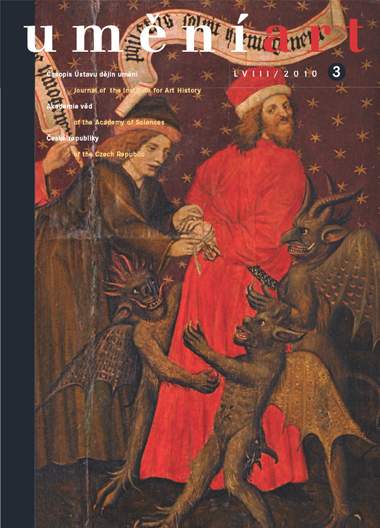Wilfried Franzen
"Quod in ecclesiis habeantur venerabiles imagines…" Zwei wiederentdeckte Jakobstafeln aus der Prager Hofkirche Sigismunds von Luxemburg?
In recent years scholarship has increasingly been paying attention to the art of post-Hussite Bohemia. However, our knowledge of this era remains incomplete and rudimentary in many respects. This applies particularly to the group of panel paintings attributed to the circle of the workshop of the 'Master of Rajhrad', the evaluation of which may reveal crucial insights for a better understanding of this period. Two panels from the St James cycle painted by this workshop were long thought to have been lost. Unnoticed by scholars, in 1948 they were taken from Matzen Castle near Brixlegg into the possession of the Tiroler Landesmuseum Ferdinandeum in Innsbruck, where they have been kept in storage ever since. These panels have traditionally been considered to be part of a set of eleven more panels in the same format, six of them depicting the legend of St James the Great and five showing episodes from the life of the Virgin Mary. They have been interpreted as remnants of a double-winged retable once intended for a church dedicated to St James. Their rediscovery provides us with a wider material basis for a re-examination of the ideas and theories that have been advanced with regard to this cycle. A technological examination of the panels (measurement of the joints and comparison of the grain of the wood and the knotholes) brought to light a rather unexpected result: Contrary to current hypotheses, these thirteen panels originate from two different retables. Nevertheless, style and technique indicate a coeval production of both cycles in the same workshop. Furthermore, the partly identical provenance and the apparently identical composition of the retables suggest both to have been intended for display within the same location. Hence the two retables may well derive from a joint complex of donations. Whether they were in fact created as part of the post-Hussite refurbishment campaign at the church of St James's in Prague on the occasion of its re-consecration in 1437 cannot be said for certain.
Full-text in the Digital Library of the Czech Academy of Sciences:
https://kramerius.lib.cas.cz/uuid/uuid:698f7276-cab4-2d5d-8b2c-f90d48b3840c
< back

